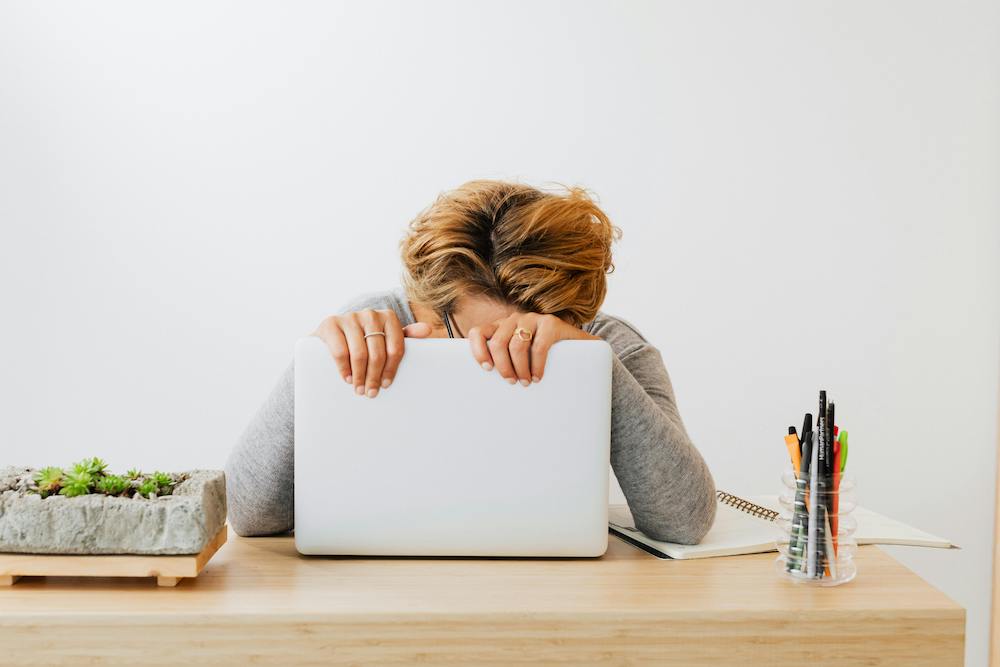
With a little creativity, you can build an upcycled home office that supports your posture, reduces strain, and keeps waste out of the landfill.
One of the most common posture problems today is tech neck — that stiff, sore feeling from hunching over screens. The good news? You don’t need fancy equipment to fight it. Everyday items you already have lying around can help you ease pain and create a healthier setup.

Why an Upcycled Home Office Matters
Bad posture sneaks up on you. Hours at a screen with a slouched back or dropped head put stress on the spine, shoulders, and hips. Over time, this leads to stiffness, headaches, and chronic pain. Neck pain affects hundreds of millions worldwide (about 200 million people annually), so you’re not alone. But that doesn’t mean you should just sit and do nothing about it.
Instead of spending hundreds on ergonomic chairs and risers, you can get the same benefits with repurposed props. This not only saves money but also gives new life to items that might otherwise go to waste. A small setup change today can prevent years of discomfort.
Understanding Tech Neck
Tech neck is the result of forward-head posture and repetitive flexion while using phones, tablets, or laptops. When your head tips forward even a few degrees, the load on your cervical spine multiplies. Over hours and days, that added strain causes tightness, soreness, and fatigue.
Mild cases feel like stiffness after work. But more serious symptoms — like radiating pain, tingling, or weakness in the arms — can signal nerve or disc involvement. If that happens, it’s time to see a professional.
Chronic mechanical overload can strain cervical discs, which can lead to long-term complications if left untreated. Thankfully, there are advanced options today, including minimally invasive spine surgery and cervical disc replacement (Dr. Branko Skovrlj is known precisely for his minimally invasive approach).
The encouraging news: tech neck often improves with consistent posture fixes and movement breaks. Building an upcycled home office helps you make those fixes quickly, without waiting for expensive equipment to arrive.
1. Scrap-Wood Laptop Riser for an Upcycled Home Office
A laptop that sits too low forces your neck to bend forward. A simple riser solves this. Cut a box-shaped platform from scrap plywood so the screen sits at eye level. Add non-slip tape to the top and a shallow lip in front to keep the laptop from sliding. It’s an instant upgrade for alignment.
2. Corrugated-Cardboard Monitor Lift
Got cardboard boxes? Stack and tape corrugated layers into a block under your monitor base. For extra stability, add a reclaimed cutting board or thin wood slat on top. This budget-friendly lift puts your screen where it belongs — at eye level, reducing neck strain.
3. Fabric-Scrap Neck Cushion for an Upcycled Home Office
Sew a simple sleeve from fabric scraps and fill it with foam scraps or rolled towels. Use it as a soft cushion behind your neck to encourage neutral posture. Unlike a rigid brace, this gentle support simply reminds you to keep your chin tucked and ears aligned with your shoulders.
4. Magazine-Stack Footrest in a Tote for an Upcycled Home Office
Your lower body affects your neck more than you think. A tilted pelvis helps maintain your spine’s natural curve, preventing slouching that leads to tech neck. Stack old magazines inside a tote or sturdy box to make a footrest. Tape for reinforcement. This simple shift eases pressure from the ground up.
5. Thrifted Timer for Movement Breaks
Even the best upcycled home office can’t protect you if you sit too long. Movement is key. Grab a thrifted kitchen timer or interval timer and set it for every 20–30 minutes. Stand, stretch, or try a quick chin-tuck and shoulder-squeeze. Research shows active breaks can cut new neck pain by more than half.
Other Small Habits That Help
Props give you cues, but variety cements healthy posture. Change positions often, take calls standing, and stretch your chest open after long sitting spells. Keep your baseline simple: ears over shoulders, shoulders over hips.
If pain is severe, progressive, or neurologic, don’t ignore it. Clinicians can offer everything from targeted rehab to minimally invasive treatments. Early care always expands your options.
